Fuel Injector Replacement Right
Tools Required
| • | EN-47909 Injector Bore and Sleeve Cleaning Kit |
| • | J-46594 Fuel Injector Puller |
Removal Procedure
- Remove the air cleaner outlet duct. Refer to Air Cleaner Outlet Duct Replacement .
- Using a pick or a small flat-bladed screw driver, remove and discard the quick connect fitting clip from the charged air cooler outlet duct.
- Remove the charged air cooler outlet duct from the intake.
- Remove the fuel filter and bracket. Refer to Fuel Filter Replacement .
- Remove the wiring harness retainer from the bracket.
- Remove the oil level indicator tube bolt.
- Remove the oil level indicator tube bracket bolts.
- Remove the bracket.
- Prior to removing the fuel injector pipes, use compressed air to blow any debris from between the injector line and fittings. Wipe the fittings clean of debris.
- Spray lithium grease, GM P/N 12346293 or equivalent, between the fuel injector line and fittings to assist in containing any debris during removal.
- Remove the fuel injector pipes.
- Remove the fuel return hose clips.
- Remove the fuel return hose from the injectors.
- Disconnect the fuel injector electrical connectors.
- Remove the fuel injector bracket bolts.
- Install J-46594 into the bolt hole in the fuel injector bracket.
- Install a flare nut wrench onto J-46594 and pull back away from the fuel injector, until the injector releases from its seat.
- Remove J-46594 .
- Remove the fuel injectors with brackets.
- If necessary, remove the fuel injector bracket pins.
- Remove and discard the copper washer from the fuel injector bore.
- Remove and discard the O-ring from the fuel injector.
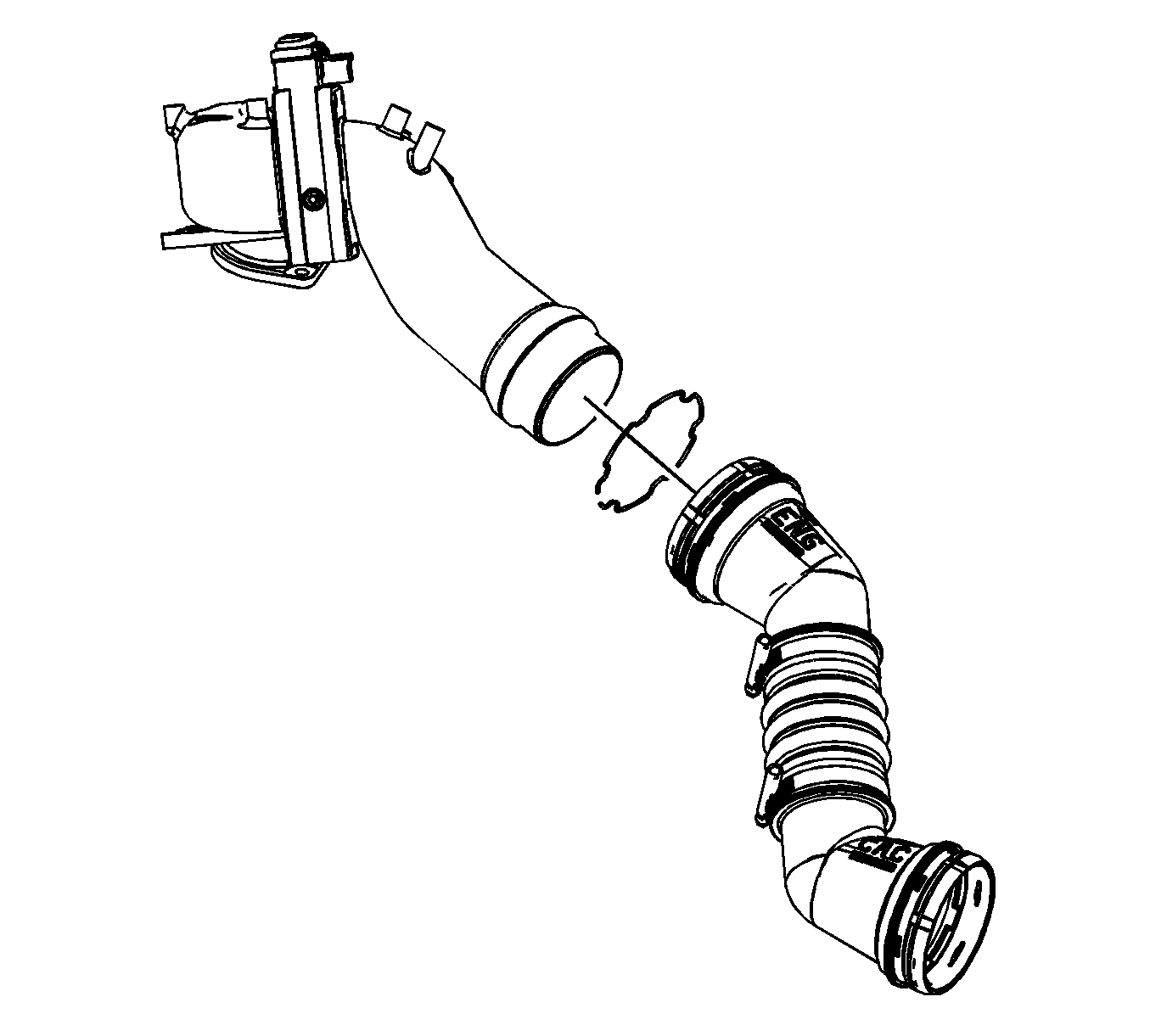

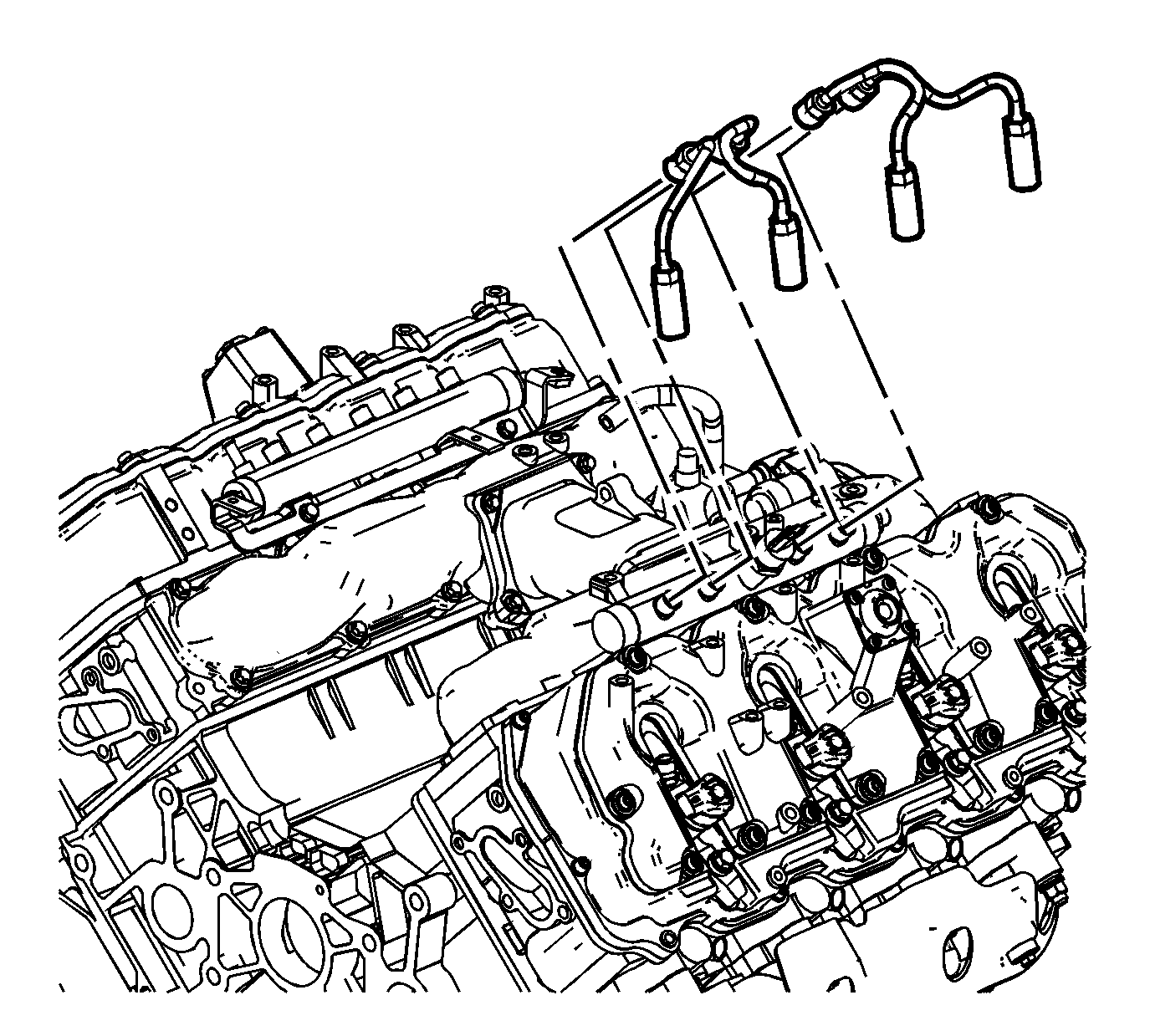
Notice: DO NOT use compressed air to clean debris from the fuel injector inlet after the fuel line is removed. Using compressed air can allow debris to enter the fuel injector inlet and damage the fuel injector.
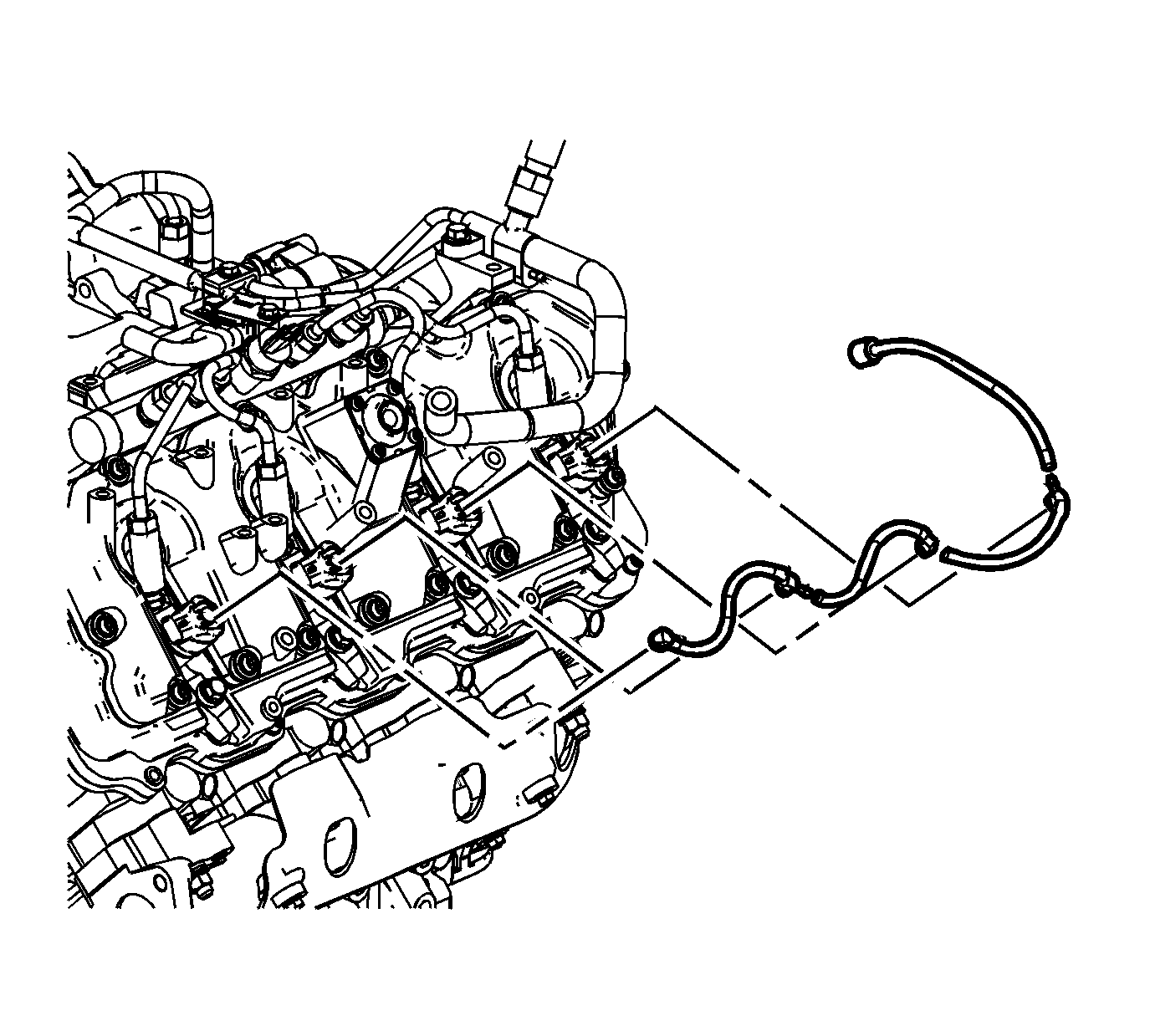
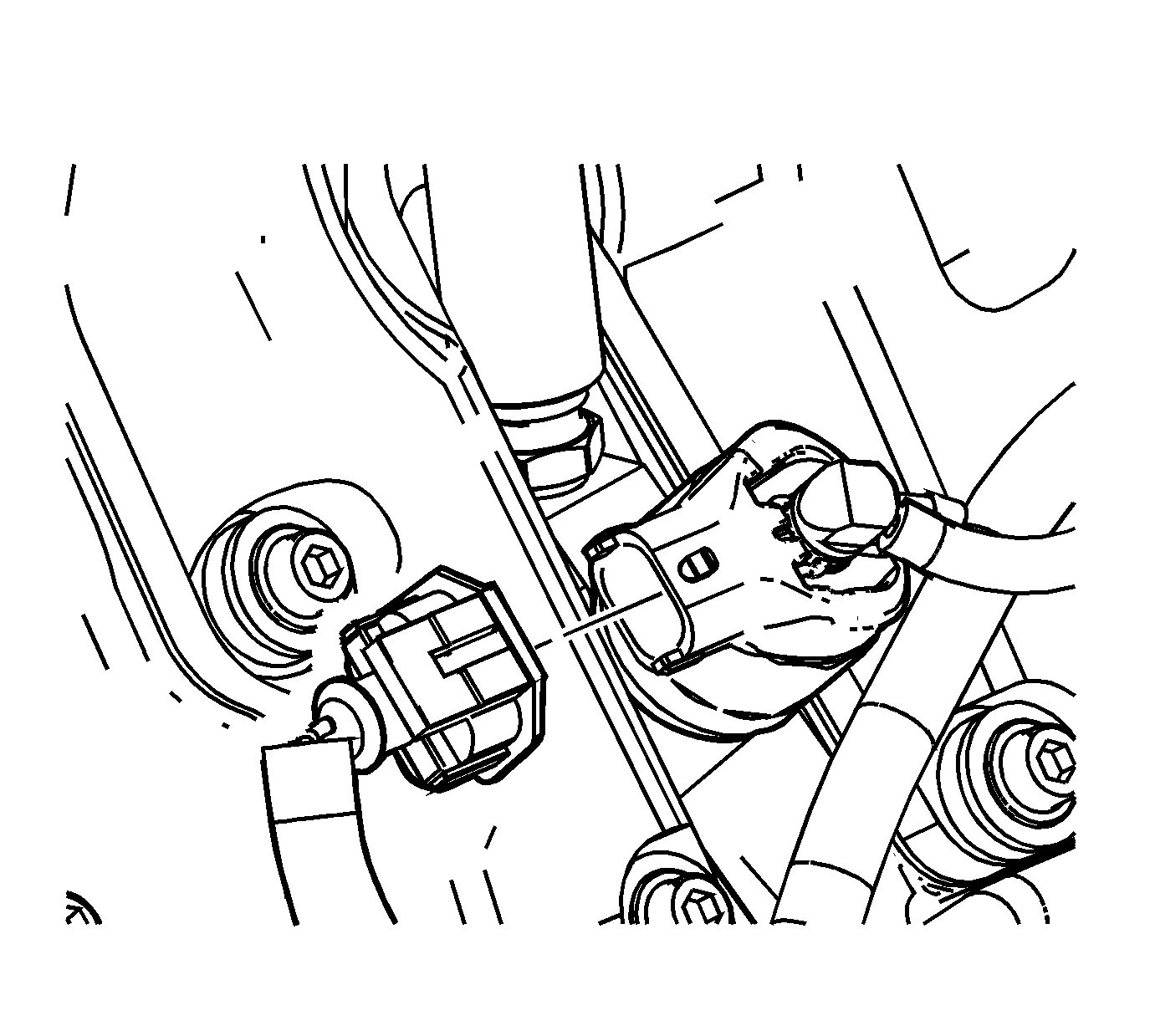
Notice: Label all the injector electrical connectors before the connectors are removed in order to prevent reconnecting to the wrong injector. Failure to properly connect the injectors in the correct sequence will cause severe engine damage.
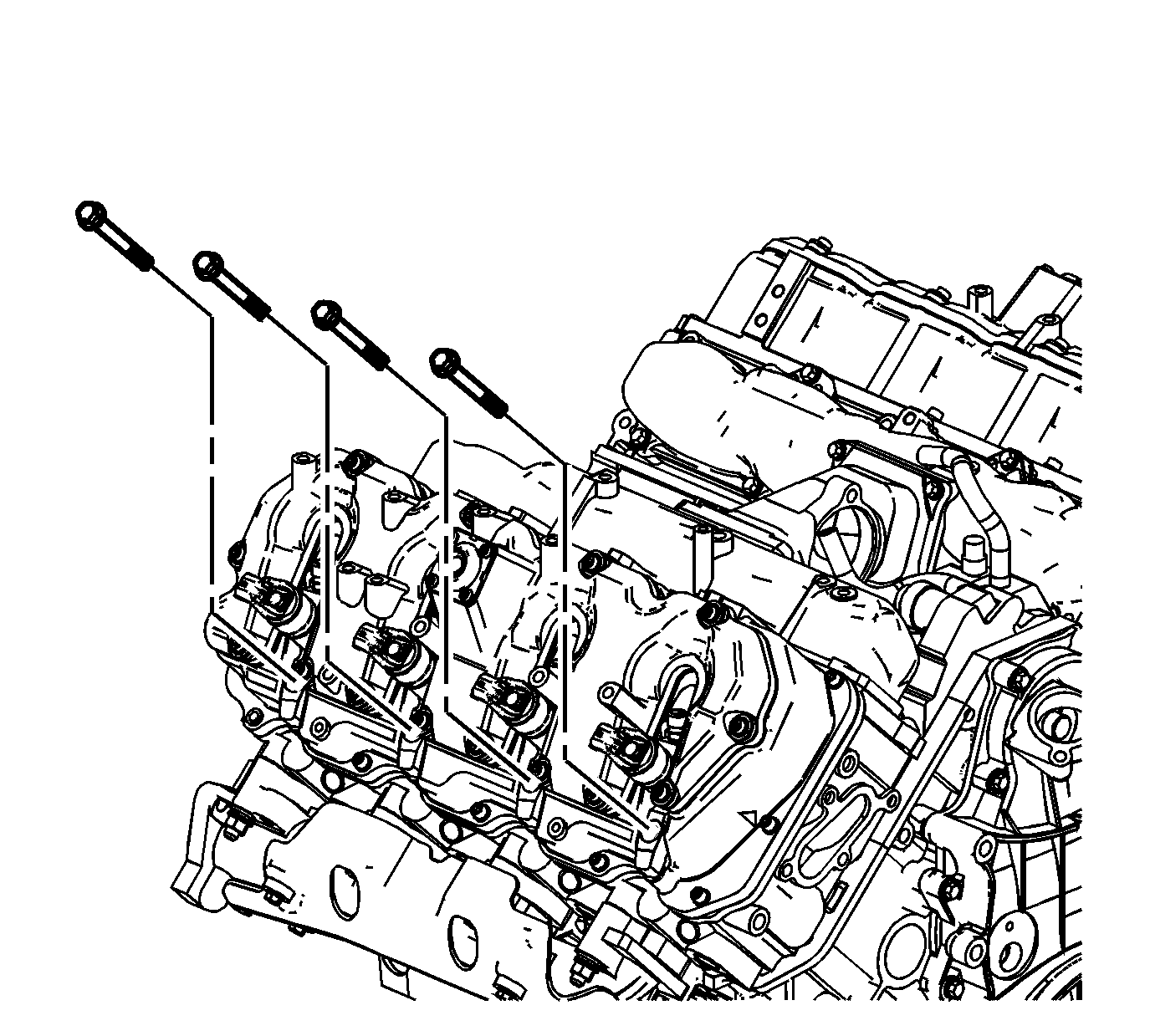
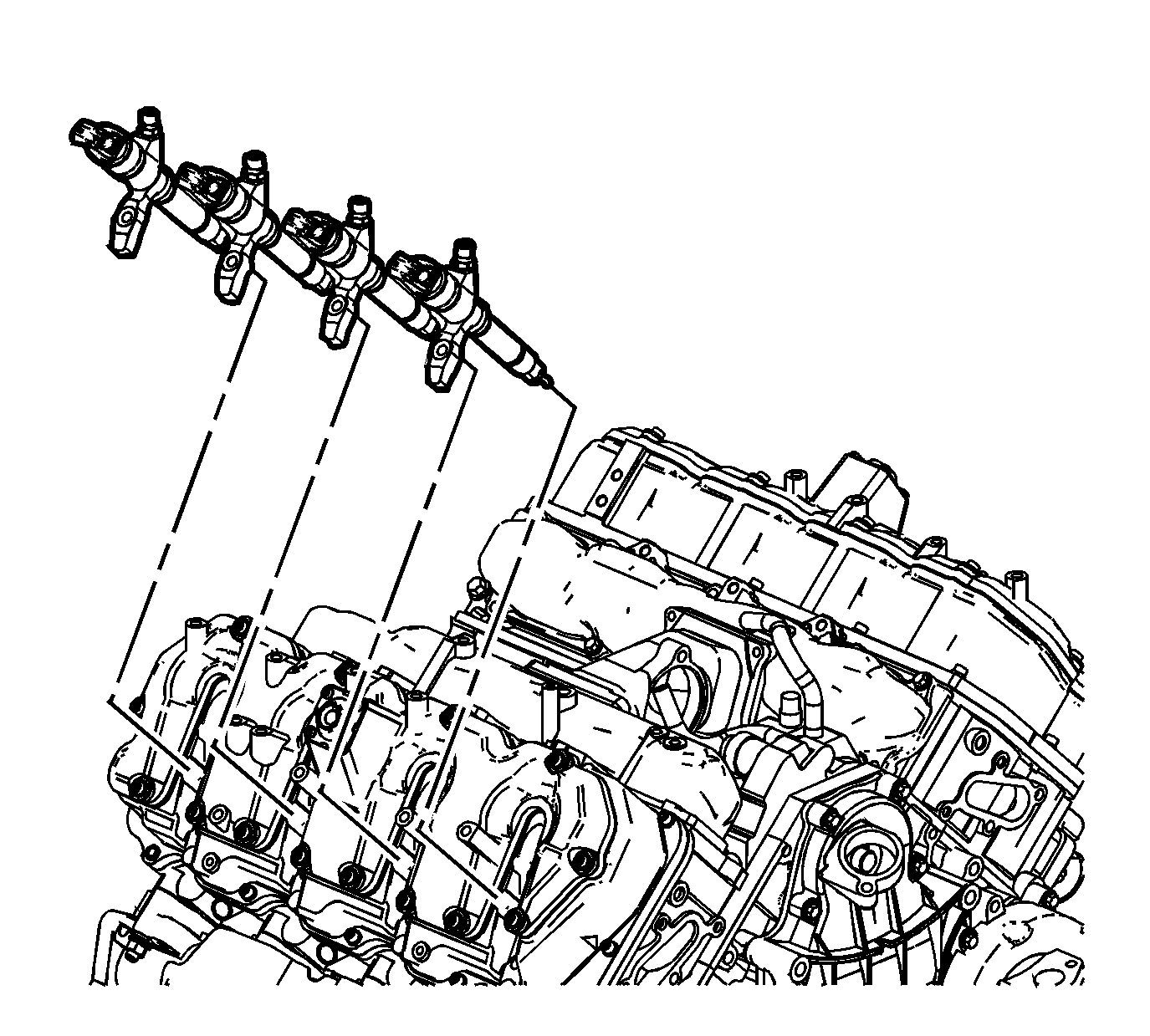
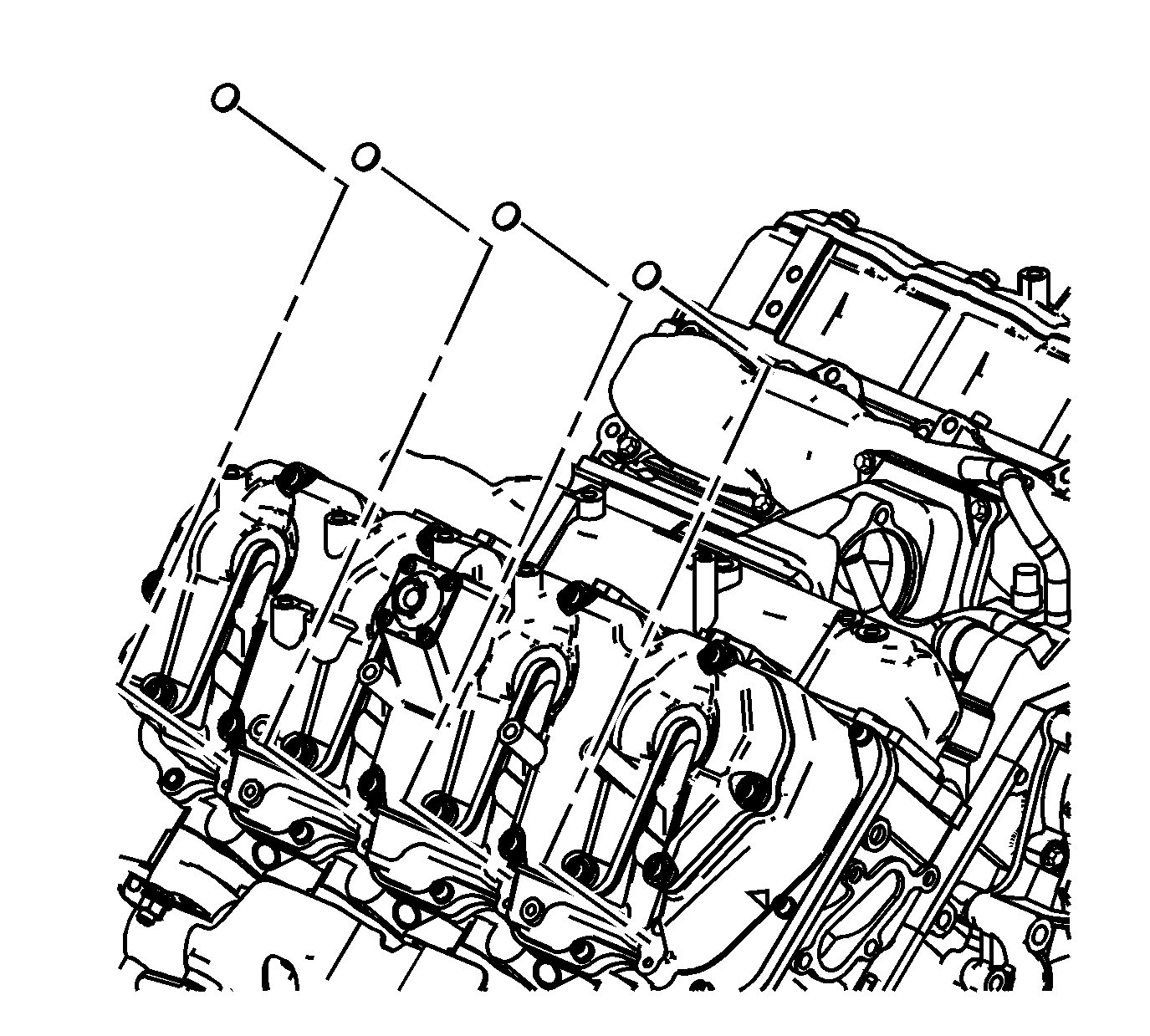
Fuel Injector Cleaning and Inspection
Important: If reusing the old injectors perform the following:
- Use a soft bristle non-metallic brush and Top Engine Cleaner, GM P/N 1052626 or equivalent, to remove any deposits from the nozzle tip (1) and the copper washer sealing area (2) before re-installation.
- Inspect the fuel injector nozzle tip (1) for any signs of discoloration (dark yellow, tan or blue) due to excessive heat.
- Replace the injector if any damage is found.
- Clean the fuel injector high pressure line.
- Inspect the fuel injector line for excessive corrosion or damage to the sealing surfaces (1, 2). Replace the line if any damage is found.
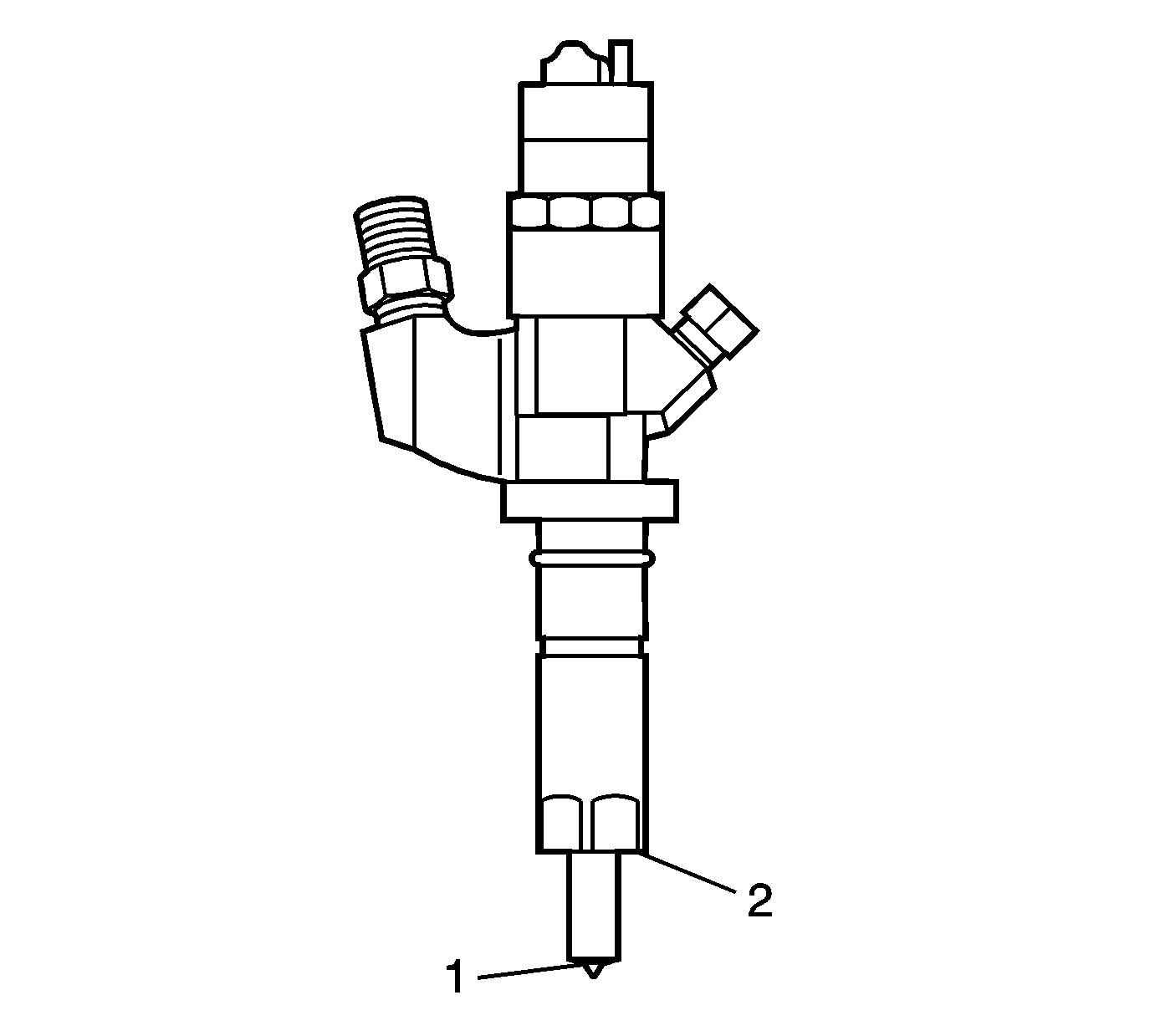
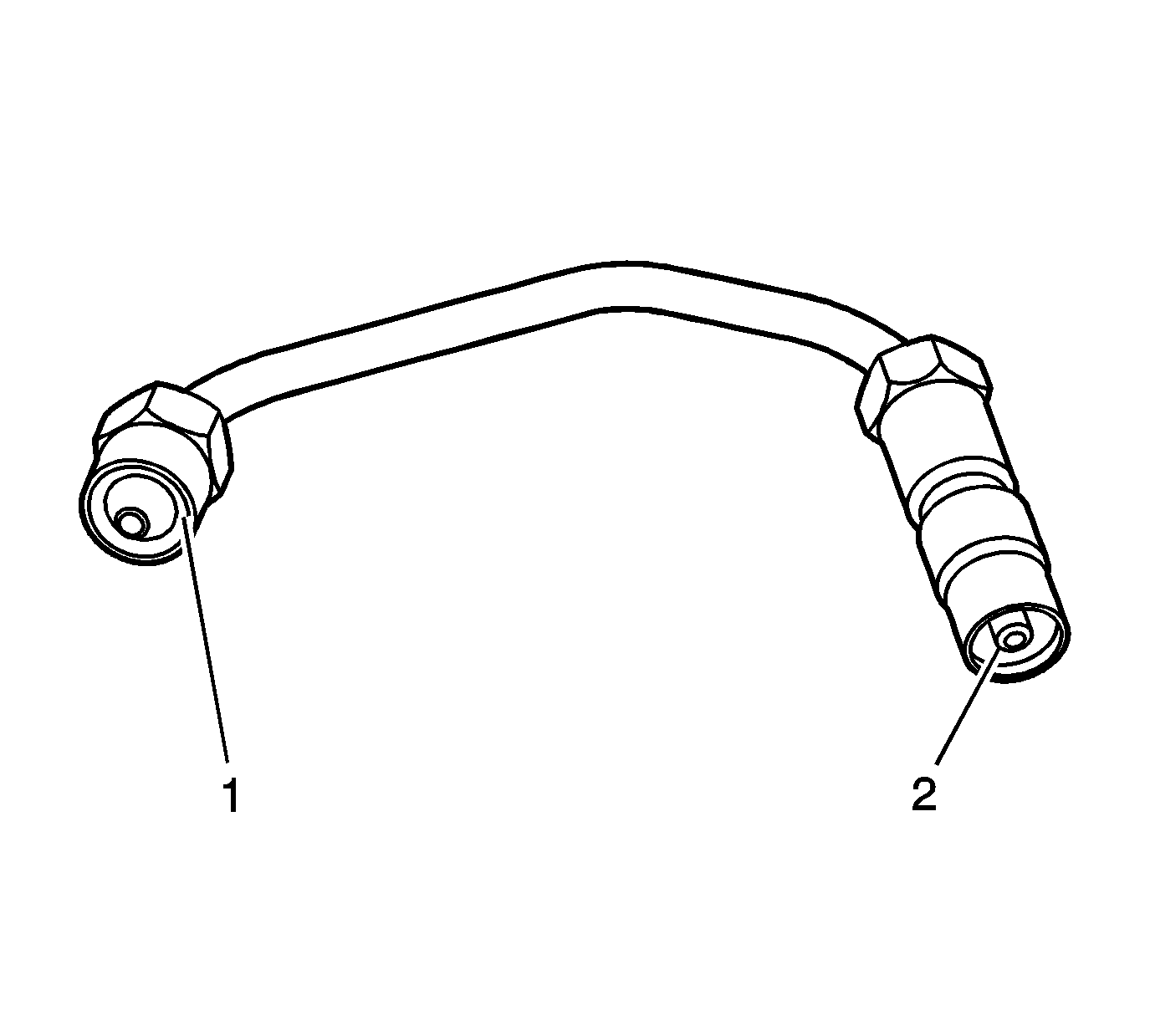
Injector Bore Cleaning
Important: The procedure below will aid in the cleaning of carbon deposits from the injector sleeve during an injector replacement
- Install the EN-47909-2 Radial Brush (brass), to the EN-47909-1 Handle Assembly.
- Insert the brush into the injector bore and rotate the handle in order to break loose any carbon deposits from the injector bore walls and the combustion deck hole.
- Using compressed air, evacuate any debris from the injector bore.
- Remove the radial brush from the handle assembly.
- Install the EN-47909-3 Axial Brush (nylon), to the EN-47909-1.
- Insert the axial brush into the injector bore and rotate the handle while also applying a slight downward pressure, in order to force the brush ends into the bottom corners of the injector bore.
- Using compressed air, evacuate any debris from the injector bore.
- Lightly dampen EN-47909-20 Cotton Swab with Top Engine Cleaner, GM P/N 1052626 (Canadian P/N 993026) or equivalent, and wipe away any deposits from the injector bore.
- Inspect the injector bore for any deposits and repeat brushing if necessary.
- If necessary, crank the engine in order to expel any solvent before starting the engine.
Caution: Wear safety glasses in order to avoid eye damage.
Caution: Wear safety glasses in order to avoid eye damage.
Notice: Do not allow excessive amounts of solvent to go into the cylinder during cleaning. Failure to do so may cause engine damage upon startup.
Caution: Keep hands and face clear of glow plug holes while cranking. Hot liquid or gases may be expelled during cranking.
Caution: Wear safety glasses in order to avoid eye damage.
| 10.1. | Remove the glow plugs. Refer to Glow Plug Replacement - Bank 1 and/or Glow Plug Replacement - Bank 2 . |
| 10.2. | Disable the fuel system. |
| 10.3. | Disconnect the crankshaft position (CKP) sensor electrical connector. |
| 10.4. | Crank the engine in order to expel any excessive solvent. |
| 10.5. | Using the cotton swabs supplied with the kit, wipe the injector bore clean of any solvent and/or debris. |
| 10.6. | Connect the CKP sensor electrical connector. |
| 10.7. | Enable the fuel system. |
| 10.8. | Reinstall the glow plugs. Refer to Glow Plug Replacement - Bank 1 and/or Glow Plug Replacement - Bank 2 . |
Installation Procedure
- Install a NEW copper washer to the fuel injector bore.
- Install a NEW O-ring onto the fuel injector.
- If necessary, install the fuel injector bracket pins.
- Install the fuel injectors with brackets.
- Install the fuel injector bracket bolts.
- Connect the fuel injector electrical connectors.
- Install the fuel return hose to the injectors.
- Install the fuel return hose clips.
- Install the fuel injector pipes.
- Install the bracket.
- Install the oil level indicator tube bracket bolts.
- Install the oil level indicator tube bolt.
- Install the wiring harness retainer to the bracket.
- Install the fuel filter with bracket. Refer to Fuel Filter Replacement .
- Install a NEW quick connect fitting clip to the charged air cooler duct.
- Install the charged air cooler outlet duct to the intake.
- Install the air cleaner outlet duct. Refer to Air Cleaner Outlet Duct Replacement .
- If the fuel injectors were replaced, refer to Fuel Injector Flow Rate Programming .
- Prime the fuel system. Refer to Fuel System Priming .
- Start the engine. If the engine stalls, repeat the above step.
- Once the engine starts, inspect for fuel leaks.


Notice: Refer to Fastener Notice in the Preface section.

Tighten
Tighten the bolts to 30 N·m (22 lb ft).



Notice: Ensure proper torquing of the fuel injector line. An under-torqued fuel injector line will not seal properly and an over-torqued fuel injector line may damage the fuel injector fitting. An improperly sealed or damaged fuel injector line or fuel injector fitting will cause a fuel leak.
Tighten
Tighten the fittings to 41 N·m (30 lb ft).

Tighten
Tighten the bolts to 21 N·m (15 lb ft).
Tighten
Tighten the bolt to 21 N·m (15 lb ft).

Fuel Injector Replacement Left
Tools Required
| • | EN-47909 Injector Bore and Sleeve Cleaning Kit |
| • | J-46594 Fuel Injector Puller |
Removal Procedure
- Remove the intake manifold cover. Refer to Intake Manifold Cover Replacement .
- Drain the cooling system. Refer to Cooling System Draining and Filling .
- Disconnect the negative battery cable. Refer to Battery Negative Cable Disconnection and Connection .
- Loosen the charged air cooler inlet duct connector to turbocharger clamp (1).
- Remove the charged air cooler inlet duct connector (4) from the turbocharger.
- Disconnect the main engine electrical harness connectors. Lift up on the latches (1) in order to disconnect the connectors.
- Open the harness clip (2).
- Remove the main engine electrical harness connectors.
- Remove the engine harness main electrical connectors bolts.
- Remove the main electrical connectors from the bracket.
- Disconnect the barometric sensor electrical connector.
- Remove the engine wire harness from the clip.
- Remove the main electrical harness bracket bolts.
- Remove the main electrical harness bracket.
- Disconnect the glow plug control module electrical connectors (1, 2).
- Remove the positive crankcase ventilation (PCV) hose/pipe. Refer to Air Cleaner Outlet Duct Replacement .
- Prior to removing the fuel injector pipes, use compressed air to blow any debris from between the injector line and fittings. Wipe the fittings clean of debris.
- Spray lithium grease, GM P/N 12346293 or equivalent, between the fuel injector line and fittings to assist in containing any debris during removal.
- Remove the left fuel injector pipes.
- Remove the fuel return hose clips.
- Remove the fuel return hose from the injectors.
- Disconnect the fuel injector electrical connectors.
- Remove the fuel injector bracket bolts.
- Install J-46594 into the bolt hole in the fuel injector bracket.
- Install a flare nut wrench onto J-46594 and pull back away from the fuel injector, until the injector releases from its seat.
- Remove J-46594 .
- Remove the fuel injectors with brackets.
- If necessary, remove the fuel injector bracket pins.
- Remove and discard the copper washer from the fuel injector bore.
- Remove and discard the O-ring from the fuel injector.
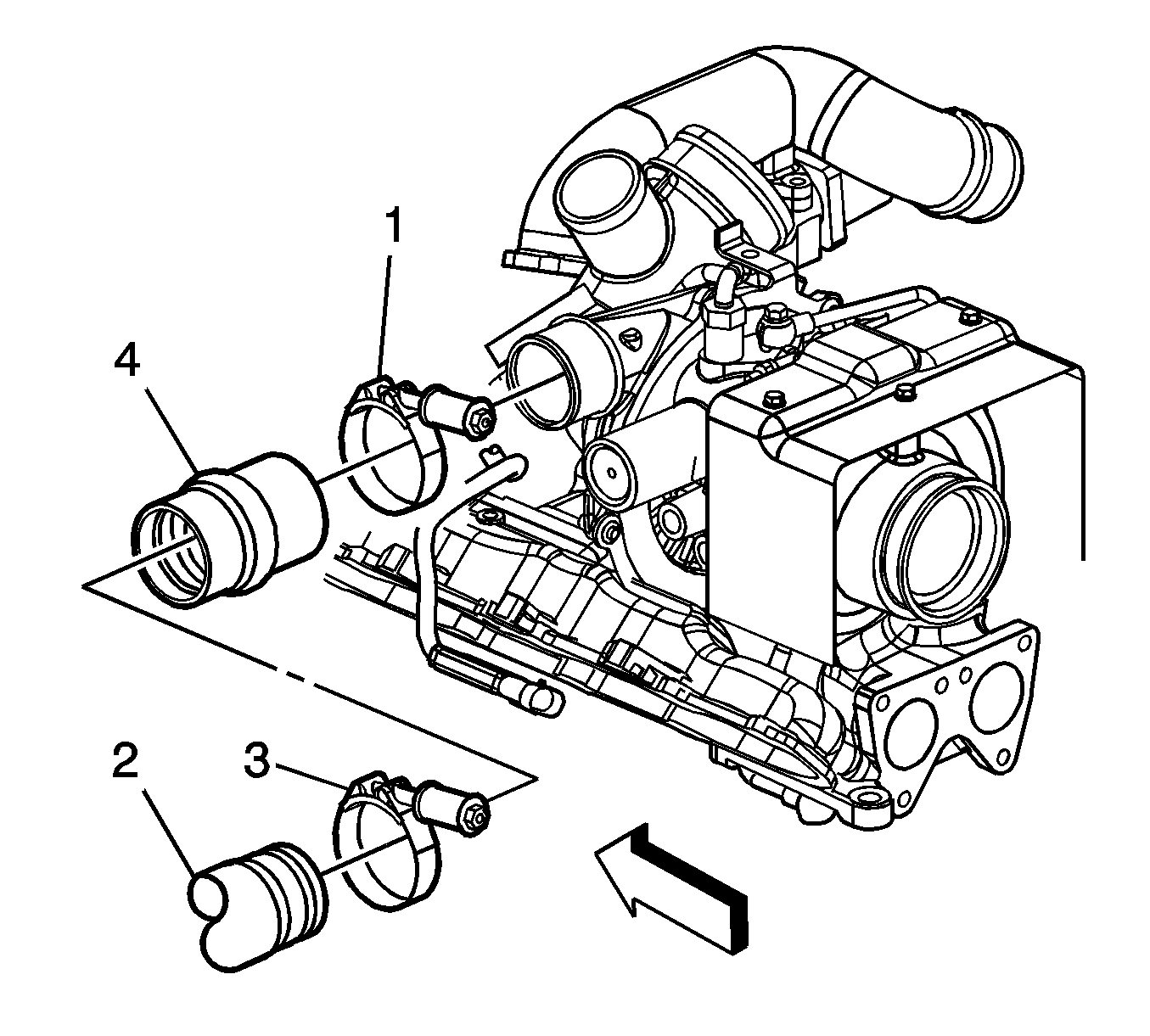
Important: After removing the charged air cooler duct, cover the turbocharger opening with tape in order to prevent entry of objects.
Important: Do not use a screwdriver or other tool to pry the hose loose. The hose can be torn or damaged. Loosen the hose by twisting.
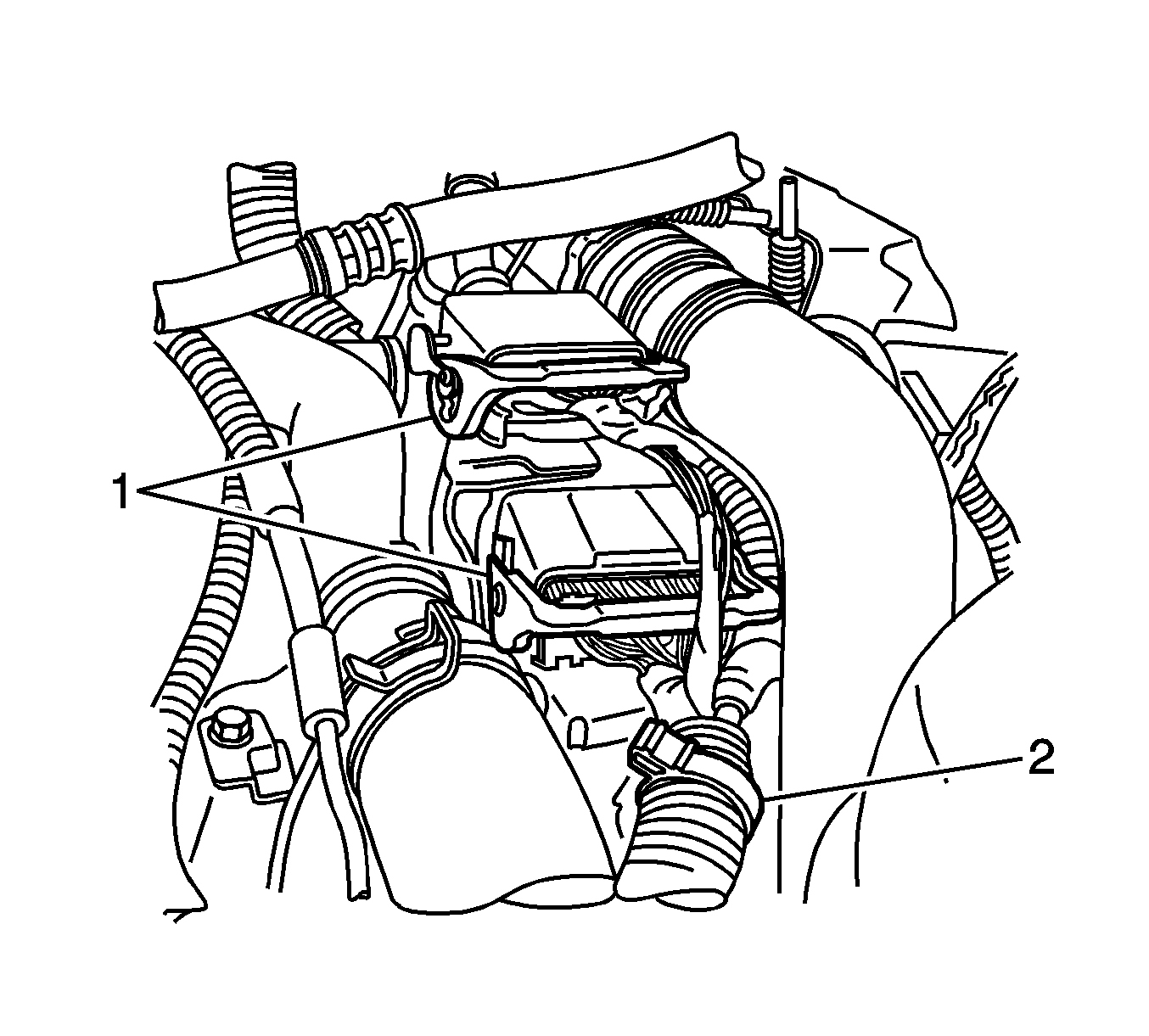
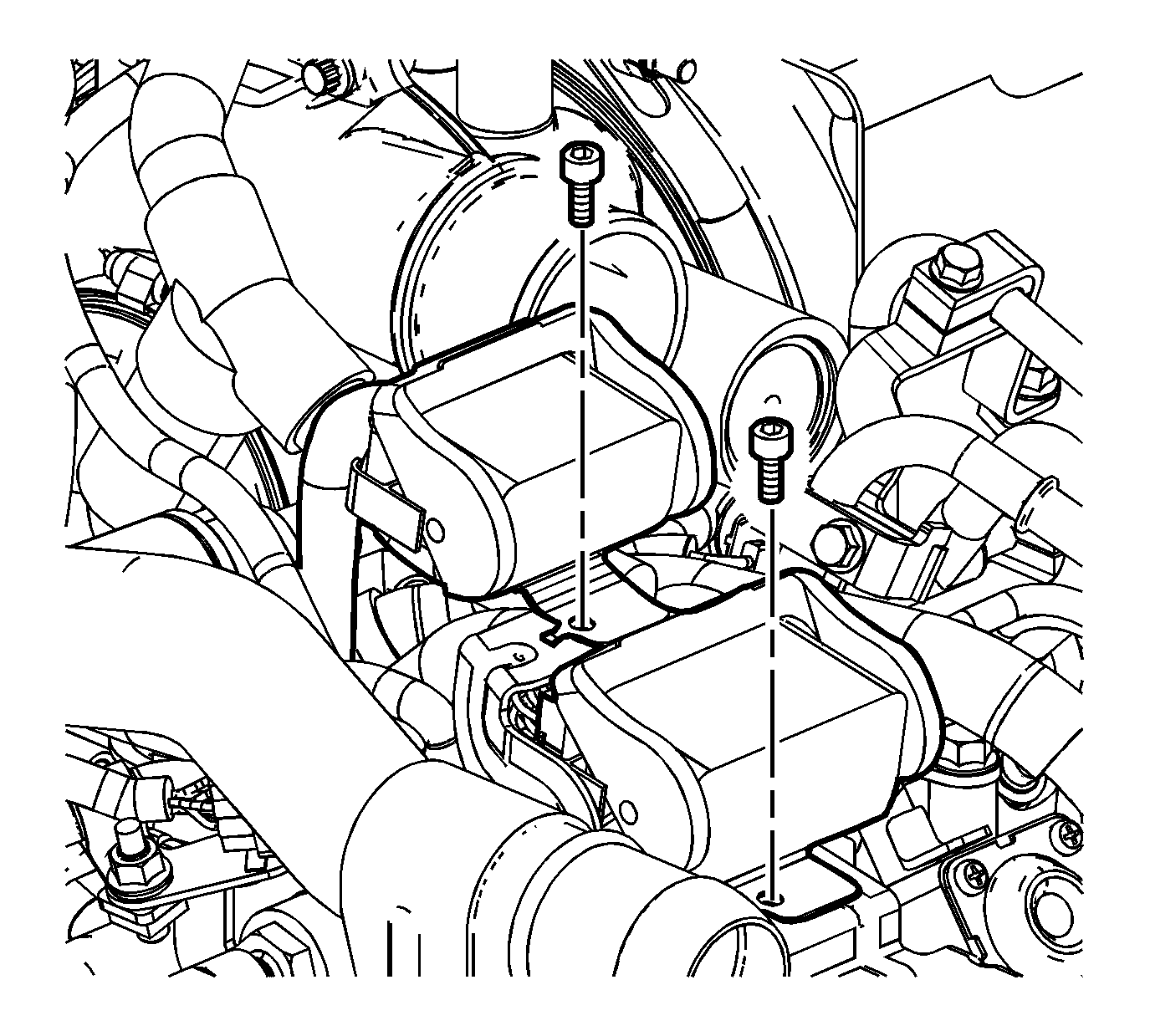
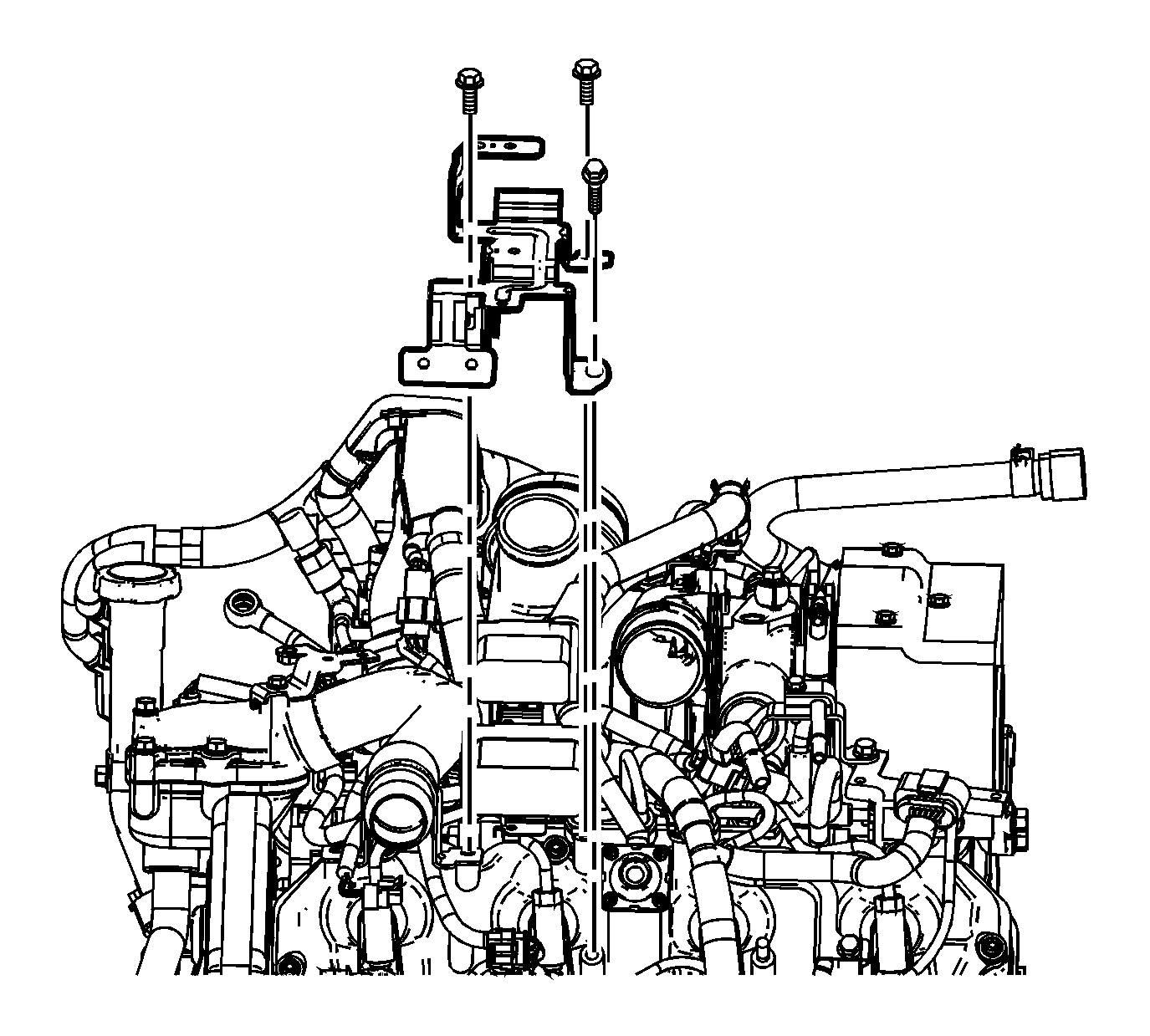
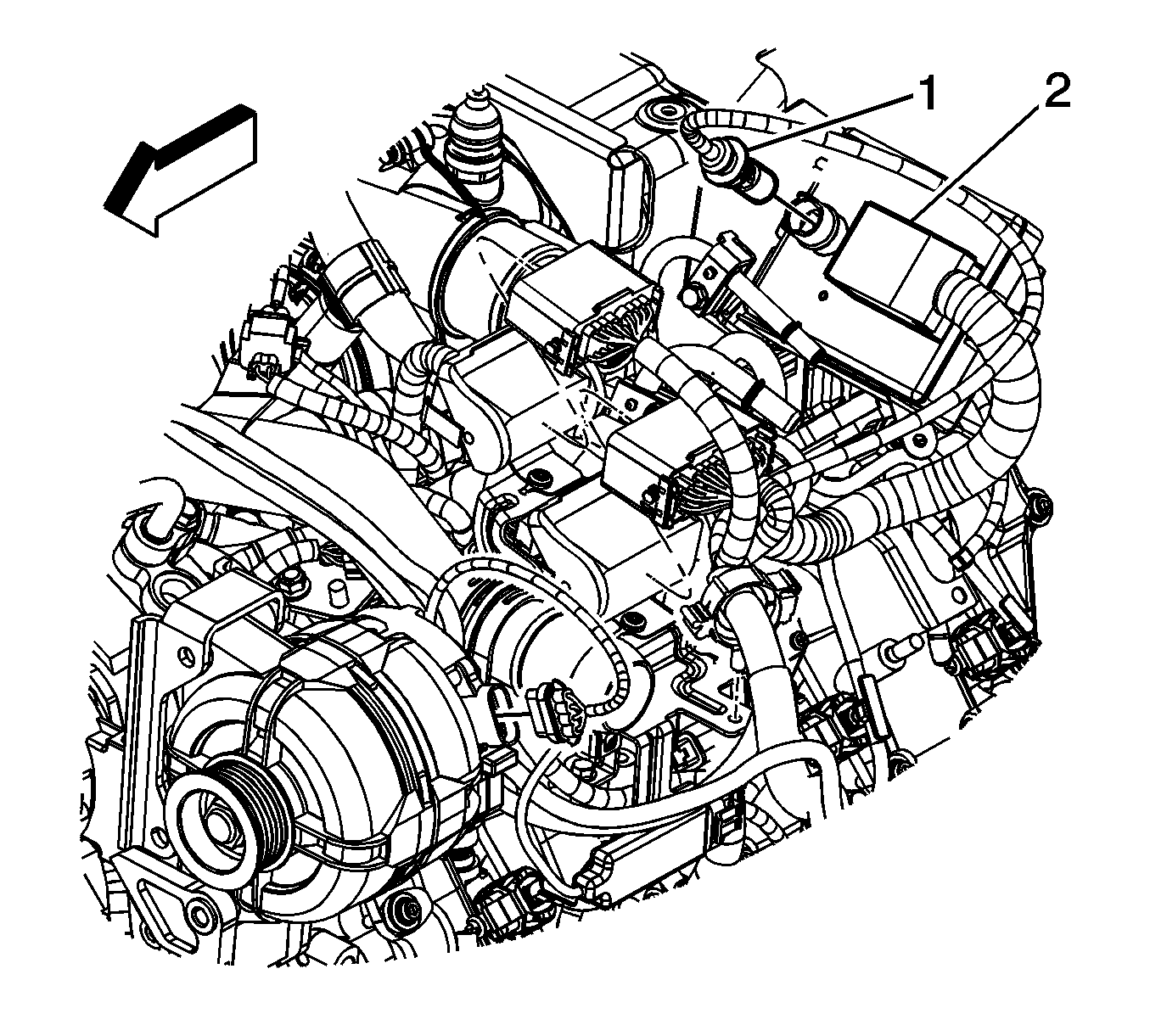
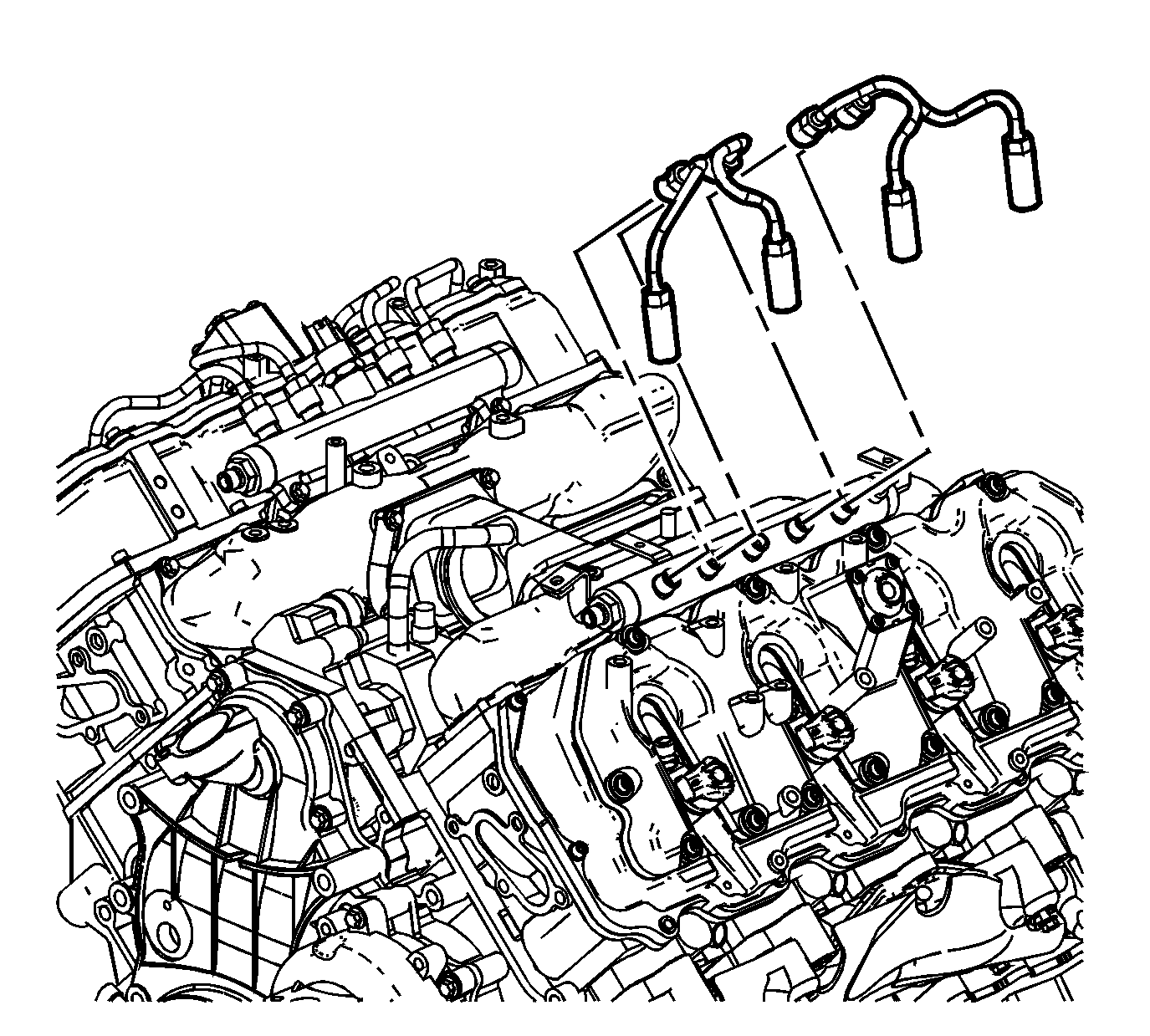
Notice: DO NOT use compressed air to clean debris from the fuel injector inlet after the fuel line is removed. Using compressed air can allow debris to enter the fuel injector inlet and damage the fuel injector.
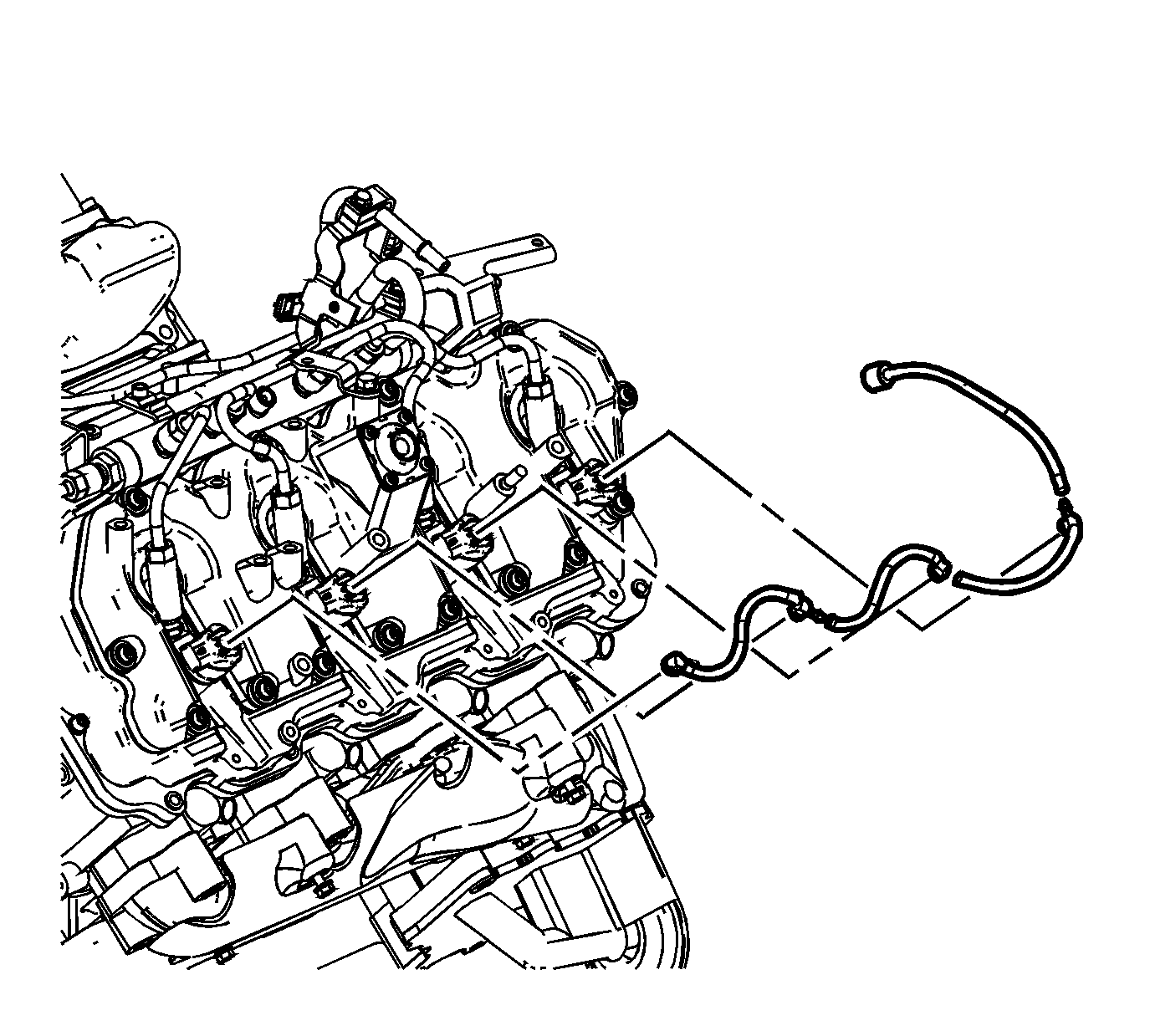

Notice: Label all the injector electrical connectors before the connectors are removed in order to prevent reconnecting to the wrong injector. Failure to properly connect the injectors in the correct sequence will cause severe engine damage.

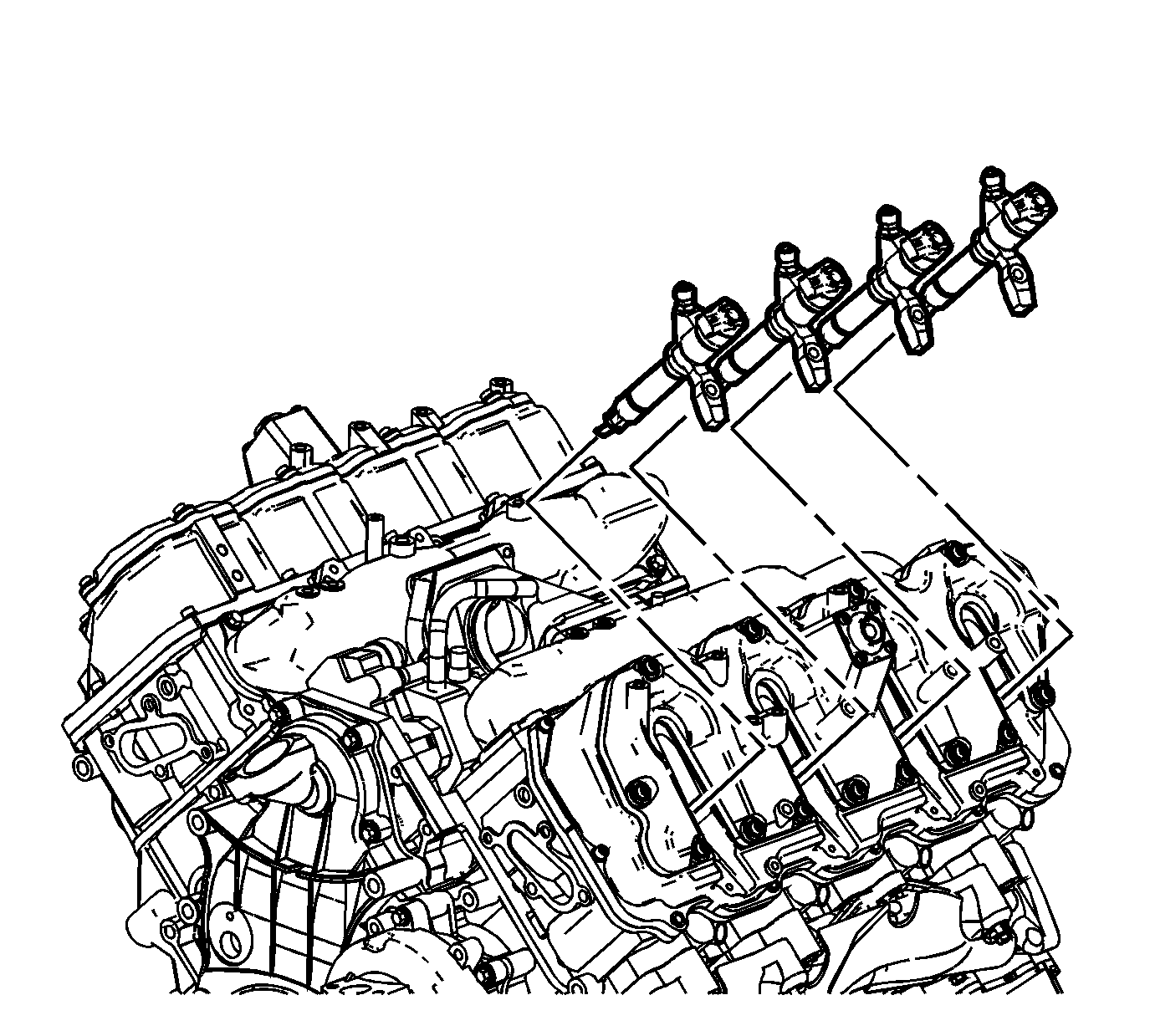

Fuel Injector Cleaning and Inspection
Important: If reusing the old injectors perform the following:
- Use a soft bristle non-metallic brush and Top Engine Cleaner, GM P/N 1052626 or equivalent, to remove any deposits from the nozzle tip (1) and the copper washer sealing area (2) before re-installation.
- Inspect the fuel injector nozzle tip (1) for any signs of discoloration (dark yellow, tan or blue) due to excessive heat.
- Replace the injector if any damage is found.
- Clean the fuel injector high pressure line.
- Inspect the fuel injector line for excessive corrosion or damage to the sealing surfaces (1, 2). Replace the line if any damage is found.


Injector Bore Cleaning
Important: The procedure below will aid in the cleaning of carbon deposits from the injector sleeve during an injector replacement
- Install the EN-47909-2 Radial Brush (brass), to the EN-47909-1 Handle Assembly.
- Insert the brush into the injector bore and rotate the handle in order to break loose any carbon deposits from the injector bore walls and the combustion deck hole.
- Using compressed air, evacuate any debris from the injector bore.
- Remove the radial brush from the handle assembly.
- Install the EN-47909-3 Axial Brush (nylon), to the EN-47909-1.
- Insert the axial brush into the injector bore and rotate the handle while also applying a slight downward pressure, in order to force the brush ends into the bottom corners of the injector bore.
- Using compressed air, evacuate any debris from the injector bore.
- Lightly dampen EN-47909-20 Cotton Swab with Top Engine Cleaner, GM P/N 1052626 (Canadian P/N 993026) or equivalent, and wipe away any deposits from the injector bore.
- Inspect the injector bore for any deposits and repeat brushing if necessary.
- If necessary, crank the engine in order to expel any solvent before starting the engine.
Caution: Wear safety glasses in order to avoid eye damage.
Caution: Wear safety glasses in order to avoid eye damage.
Notice: Do not allow excessive amounts of solvent to go into the cylinder during cleaning. Failure to do so may cause engine damage upon startup.
Caution: Keep hands and face clear of glow plug holes while cranking. Hot liquid or gases may be expelled during cranking.
Caution: Wear safety glasses in order to avoid eye damage.
| 10.1. | Remove the glow plugs. Refer to Glow Plug Replacement - Bank 1 and/or Glow Plug Replacement - Bank 2 . |
| 10.2. | Disable the fuel system. |
| 10.3. | Disconnect the crankshaft position (CKP) sensor electrical connector. |
| 10.4. | Crank the engine in order to expel any excessive solvent. |
| 10.5. | Using the cotton swabs supplied with the kit, wipe the injector bore clean of any solvent and/or debris. |
| 10.6. | Connect the CKP sensor electrical connector. |
| 10.7. | Enable the fuel system. |
| 10.8. | Reinstall the glow plugs. Refer to Glow Plug Replacement - Bank 1 and/or Glow Plug Replacement - Bank 2 . |
Installation Procedure
- Install a NEW copper washer to the fuel injector bore.
- Install a NEW O-ring onto the fuel injector.
- If necessary, install the fuel injector bracket pins.
- Install the fuel injectors with brackets.
- Install the fuel injector bracket bolts.
- Connect the fuel injector electrical connectors.
- Install the fuel return hose to the injectors.
- Install the fuel return hose clips.
- Install the fuel injector pipes.
- Install the PCV hose/pipe. Refer to Air Cleaner Outlet Duct Replacement .
- Connect the glow plug control module electrical connector (1, 2).
- Install the main electrical harness bracket.
- Install the main electrical harness bracket bolts.
- Connect the barometric sensor electrical connector.
- Install the engine wire harness to the clip.
- Install the main electrical connectors to the bracket.
- Install the engine harness main electrical connectors bolts.
- Connect the main engine electrical harness connectors.
- Push down on the latches (1) in order to connect the connectors.
- Close the harness clip (2).
- Remove the tape from the turbocharger openings.
- Install the charged air cooler inlet duct connector (4) to the turbocharger.
- Tighten the charged air cooler inlet duct connector to turbocharger clamp (1).
- Fill the cooling system. Refer to Cooling System Draining and Filling .
- Connect the negative battery cable. Refer to Battery Negative Cable Disconnection and Connection .
- Install the intake manifold cover. Refer to Intake Manifold Cover Replacement .
- If the fuel injectors were replaced, refer to Fuel Injector Flow Rate Programming .
- Prime the fuel system. Refer to Fuel System Priming .
- Start the engine. If the engine stalls, repeat the above step.
- Once the engine starts, inspect for fuel leaks.


Notice: Refer to Fastener Notice in the Preface section.

Tighten
Tighten the bolts to 30 N·m (22 lb ft).



Notice: Ensure proper torquing of the fuel injector line. An under-torqued fuel injector line will not seal properly and an over-torqued fuel injector line may damage the fuel injector fitting. An improperly sealed or damaged fuel injector line or fuel injector fitting will cause a fuel leak.
Tighten
Tighten the fittings to 41 N·m (30 lb ft).


Tighten
Tighten the bolts to 21 N·m (15 lb ft).

Tighten
Tighten the bolts to 21 N·m (15 lb ft).


Tighten
Tighten the clamp to 6 N·m (53 lb in).
